
Michael Rennie was a British film, television and stage actor, who had leading roles in a number of Hollywood films, including his portrayal of the space visitor Klaatu in the science fiction film The Day the Earth Stood Still (1951). In a career spanning more than 30 years, Rennie appeared in more than 50 films and in several American television series.

The L-Shaped Room is a 1962 British drama romance film directed by Bryan Forbes, based on the 1960 novel of the same name by Lynne Reid Banks. It tells the story of Jane Fosset, a young French woman, unmarried and pregnant, who moves into a cheap London boarding house, befriending a young man, Toby, in the building. The work is considered part of the kitchen sink realism school of British drama. The film reflected a trend in British films of greater frankness about sex and displays a sympathetic treatment of outsiders "unmarried mothers, lesbian or black" as well as a "largely natural and non-judgmental handling of their problems". As director, Forbes represents "a more romantic, wistful type of realism" than that of Tony Richardson or Lindsay Anderson.

Dame Gracie Fields was an English actress, singer, comedian and star of cinema and music hall who was one of the top ten film stars in Britain during the 1930s and was considered the highest paid film star in the world in 1937. She was known affectionately as Our Gracie and the Lancashire Lass and for never losing her strong, native Lancashire accent. She was appointed a Commander of the Order of the British Empire (CBE) and an Officer of the Venerable Order of St John (OStJ) in 1938, and a Dame Commander of the Order of the British Empire (DBE) in 1979.
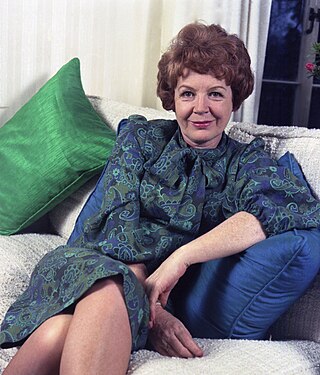
Phyllis Hannah Murray-Hill, known professionally as Phyllis Calvert, was an English film, stage and television actress. She was one of the leading stars of the Gainsborough melodramas of the 1940s such as The Man in Grey (1943) and was one of the most popular movie stars in Britain in the 1940s. She continued her acting career for another 50 years.

Romaine Brooks was an American painter who worked mostly in Paris and Capri. She specialized in portraiture and used a subdued tonal palette keyed to the color gray. Brooks ignored contemporary artistic trends such as Cubism and Fauvism, drawing on her own original aesthetic inspired by the works of Charles Conder, Walter Sickert, and James McNeill Whistler. Her subjects ranged from anonymous models to titled aristocrats. She is best known for her images of women in androgynous or masculine dress, including her self-portrait of 1923, which is her most widely reproduced work.

The Way to the Stars is a 1945 Anglo-American black-and-white Second World War drama film made by Two Cities Films. The film was produced by Anatole de Grunwald, directed by Anthony Asquith, and stars Michael Redgrave, John Mills, Rosamund John, and Stanley Holloway. In the United States it was shortened by 22 minutes, and the shortened version was distributed by United Artists under the title Johnny in the Clouds.

Jean Kent, born Joan Mildred Field was an English film and television actress.

Tullio Carminati was a Dalmatian Italian actor.

Mandy is a 1952 British drama film about a family's struggle to give their deaf daughter a better life. It was directed by Alexander Mackendrick and is based on the novel The Day Is Ours by Hilda Lewis. It stars Phyllis Calvert, Jack Hawkins and Terence Morgan, and features the first film appearance by Jane Asher. In the US the film was released as The Story of Mandy, and later was sold to television as Crash of Silence.
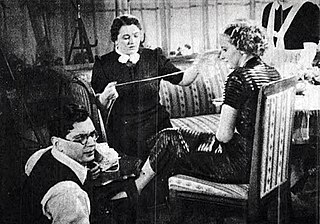
Ladislao Vajda was a Hungarian-Spanish film director who made films in Hungary, Spain, Portugal, the United Kingdom, Italy and West Germany.

John Stuart, was a Scottish actor, and a very popular leading man in British silent films in the 1920s. He appeared in three films directed by Alfred Hitchcock.

Madonna of the Seven Moons is a 1945 British drama film starring Phyllis Calvert, Stewart Granger and Patricia Roc. Directed by Arthur Crabtree for Gainsborough Pictures, the film was produced by Rubeigh James Minney, with cinematography from Jack Cox and screenplay by Roland Pertwee. It was one of the Gainsborough melodramas of the mid-1940s popular with WW2-era female audiences.

Patricia Roc was an English film actress, popular in the Gainsborough melodramas such as Madonna of the Seven Moons (1945) and The Wicked Lady (1945), though she only made one film in Hollywood, Canyon Passage (1946). She also appeared in Millions Like Us (1943), Jassy (1945), The Brothers (1947) and When the Bough Breaks (1947).
The Gainsborough melodramas were a sequence of films produced by the British film studio Gainsborough Pictures between 1943 and 1947 which conformed to a melodramatic style. The melodramas were not a film series but an unrelated sequence of films which had similar themes that were usually developed by the same film crew and frequently recurring actors who played similar characters in each. They were mostly based on popular books by female novelists and they encompassed costume dramas, such as The Man in Grey (1943) and The Wicked Lady (1945), and modern-dress dramas, such as Love Story (1944) and They Were Sisters (1945). The popularity of the films with audiences peaked mid-1940s when cinema audiences consisted primarily of women. The influence of the films led to other British producers releasing similarly themed works, such as The Seventh Veil (1945), Pink String and Sealing Wax (1945), Hungry Hill (1947), The White Unicorn (1947), Idol of Paris (1948), and The Reluctant Widow (1950) and often with the talent that made Gainsborough melodramas successful.

The Woman with No Name is a 1950 British drama film directed by Ladislao Vajda and starring Phyllis Calvert, Edward Underdown, Helen Cherry, Richard Burton and James Hayter. In the United States it was released as Her Panelled Door.
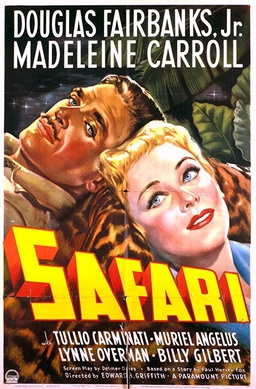
Safari is a 1940 American adventure film directed by Edward H. Griffith and starring Douglas Fairbanks Jr., Madeleine Carroll and Tullio Carminati.
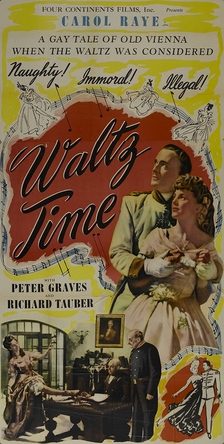
Waltz Time is a 1945 British musical film directed by Paul L. Stein and starring Carol Raye, Peter Graves and Patricia Medina.

Raymond Francis was a British actor best known for his role as Detective Chief Superintendent Tom Lockhart in the Associated-Rediffusion detective series Murder Bag, Crime Sheet and No Hiding Place. He played the role of Lockhart in these series from 1957 to 1967, and the character was one of the first recurring television detectives.
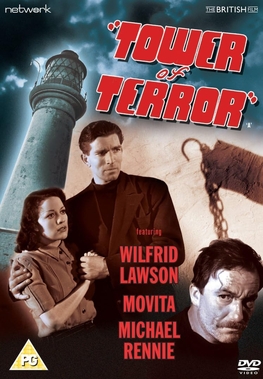
Tower of Terror is a 1941 British wartime thriller film directed by Lawrence Huntington and starring Wilfrid Lawson, Michael Rennie and Movita. It was made at Welwyn Studios with location shooting on Flat Holm off the Welsh coast.

Hell is Empty is a 1967 British crime film. It began filming in 1965 under the direction of Bernard Knowles. Filming was suspended and later resumed by John Ainsworth after Martine Carol's death. It also starred Anthony Steel, Shirley Anne Field and James Robertson Justice.



















